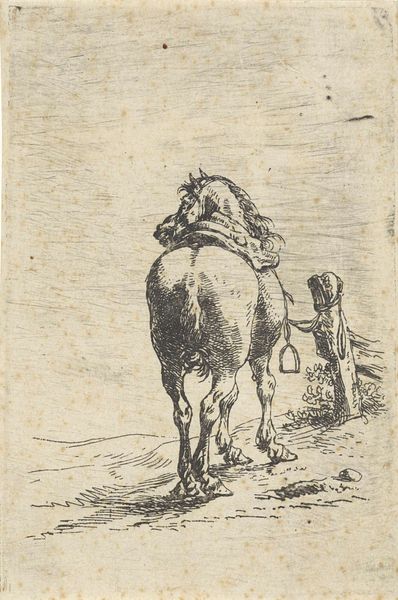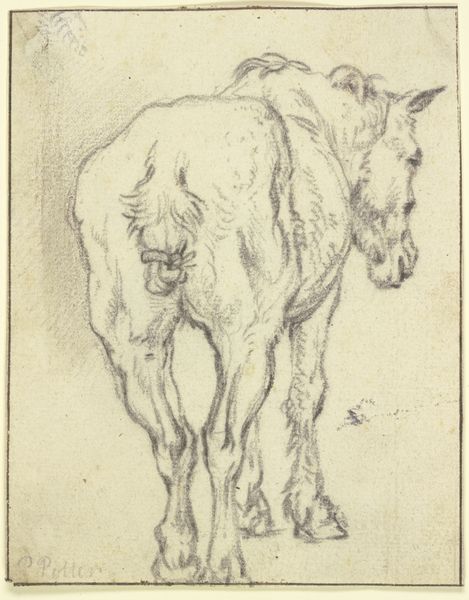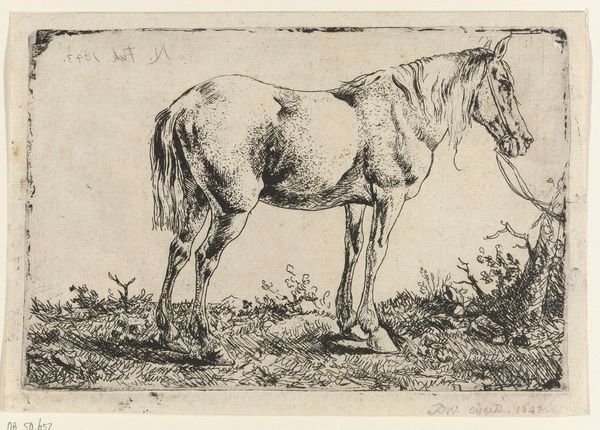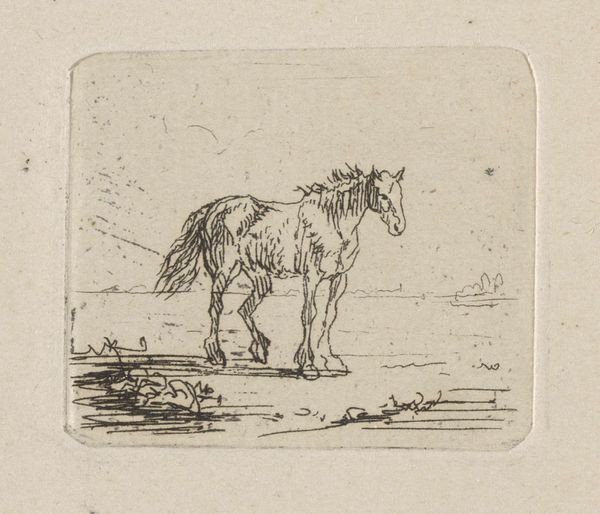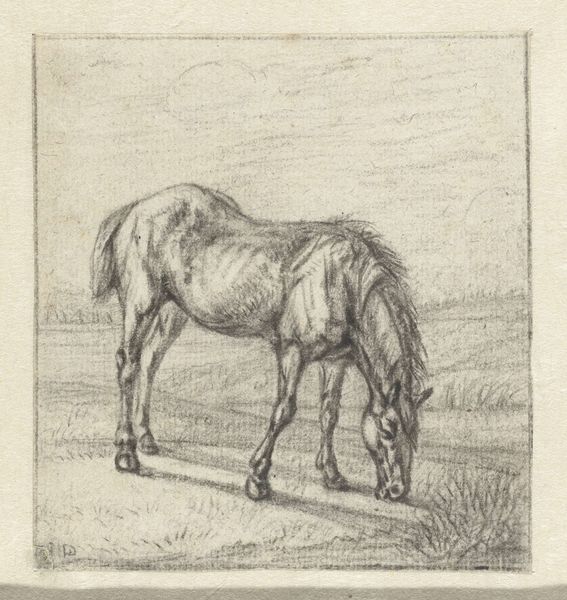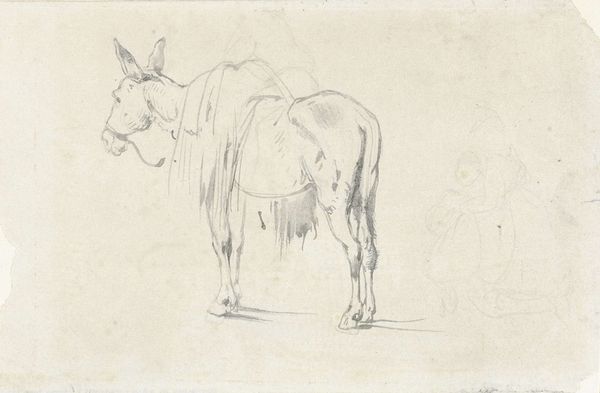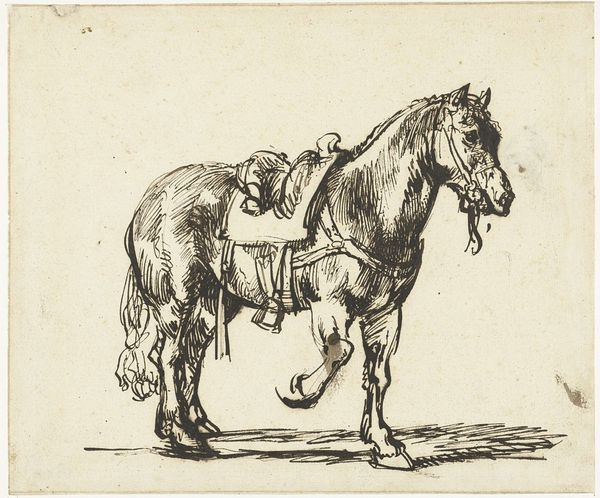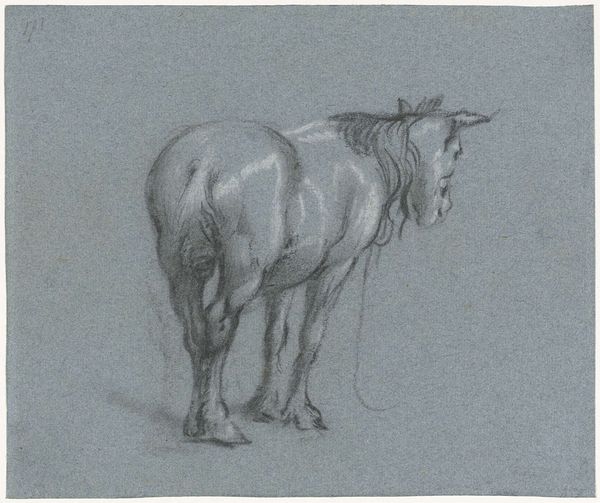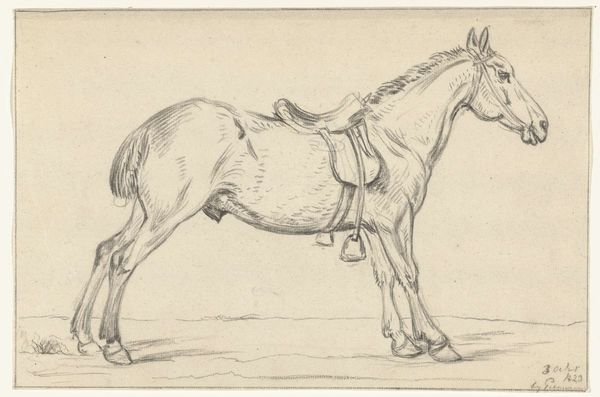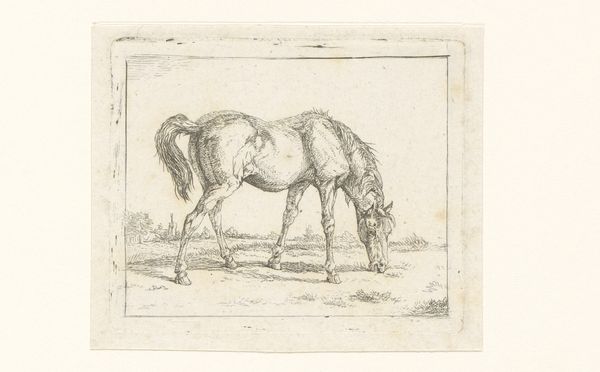
drawing, ink, pen
#
drawing
#
animal
#
pen sketch
#
ink
#
horse
#
pen
#
genre-painting
#
realism
Dimensions: height 50 mm, width 35 mm
Copyright: Rijks Museum: Open Domain
Curator: Welcome. We're looking at "Gezadeld paard van achteren gezien," or "Saddled Horse Seen from Behind," a pen and ink drawing attributed to Pieter Cornelisz. Verbeeck, likely created sometime between 1620 and 1654. Editor: The rear view… it's oddly intimate, isn't it? Makes me feel like I've stumbled upon a very private moment of horse contemplation. There’s something quietly comical, too, about this ungainly animal haunch dominating the composition. Curator: I see your point about the intimacy, but what strikes me is how Verbeeck utilizes genre painting conventions in a minimalist study. These kinds of genre scenes often depicted daily life. Horses at rest would be part of that reality. But the abstraction pushes away the normal anecdotal narrative. Editor: Abstracted narrative indeed! My eyes dance from the solid, rounded rump to the scratchy rendering of the tail, which I interpret more like a frustrated painter's scribbles. Do you see a frustrated element here? Curator: Possibly, but perhaps Verbeeck was more interested in conveying the texture and weight of the horse with minimal effort. He captures light and shadow with crosshatching and economical linework that hints at the saddle and musculature, a kind of realism that prioritized form over explicit detail. He creates almost photorealistic view of horse behind, like we have suddenly caught it grazing on the Dutch fields Editor: And the pen lines almost suggest woodcuts and engravings that dominated the era of visual communication…a sort of sly commentary there on image distribution of art and horse alike? The pen-work gives a certain rawness and gives off both humor and even sadness simultaneously. The tether implies a constraint but the overall sketch doesn't lend much details Curator: Exactly, we see here a reflection of social values. Genre painting itself was finding its feet as it navigated patronage systems while still finding space to document the ordinary, which might explain the ambivalence in how the horse looks as a kind of individual creature here. Verbeeck positions himself inside this social context as well by participating to the artistic moment of Realism Editor: Thanks for the illuminating perspective. My own take is perhaps simpler: I’ll now appreciate the, shall we say, behinds, I come across in life a little bit more deeply. There’s a subject to observe in just about everything.
Comments
No comments
Be the first to comment and join the conversation on the ultimate creative platform.
